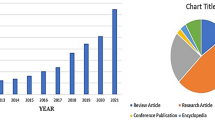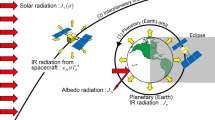Abstract
This paper presents the experimental and numerical work achieved in the aim of evaluating the heat transfer at the interfaces of threaded spacecraft assemblies, where Thermal Interface Materials (TIMs) are placed between two surfaces to improve the thermal performance. Developing a model to predict thermal resistance for such an assembly is a serious challenge, which has to take various influencing parameters into account. First, mechanical and thermal experiments used to characterise TIMs are summarised. Second, a numerical model capable of representing the behaviour of these materials is built. To verify the mechanical model, the preload of a single fastener assembly is measured and compared with a simulation. The thermo-mechanical model is verified by an assembly heated by a power resistor to evaluate the thermal aspects. The proposed material model is able to predict the loss of preload caused by creep/relaxation of the TIM and the temperature distribution of the assembly. This work is part of a broader study that seeks to develop a multi-physics approach to evaluate the heat transfer at interfaces of space application assemblies.















Similar content being viewed by others
References
Yovanovich, M.M.: Four decades of research on thermal contact, gap, and joint resistance in microelectronics. IEEE Trans. Compon. Packag. Technol. 28(2), 182–206 (2005). https://doi.org/10.1109/TCAPT.2005.848483
Sridhar, M.R., Yovanovich, M.M.: Elastoplastic contact conductance model for isotropic conforming rough surfaces and comparison with experiments. J. Heat Transf. 118(1), 3–9 (1996). https://doi.org/10.1115/1.2824065
Savija, I., Culham, J.R., Yovanovich, M.M., Marotta, E.E.: Review of thermal conductance models for joints incorporating enhancement materials. J Thermophys Heat Transf 17(1), 43–52 (2003). https://doi.org/10.2514/2.6732
Vogd, C., Fletcher, L.S., Peterson, G.P.: The interfacial pressure distribution and thermal conductance of bolted joints. J Heat Transf 116, 823–828 (1994). https://doi.org/10.1115/1.2911454
Min, S., Blumm, J., Lindemann, A.: A new laser flash system for measurement of the thermophysical properties. Thermochim. Acta. 455(1), 46–49 (2007). https://doi.org/10.1016/j.tca.2006.11.026
ASTM International: ASTM D5470-12, standard test method for thermal transmission properties of thermally conductive electrical insulation materials. West Conshohocken, PA, pp. 1-6 (2012). https://doi.org/10.1520/D5470-12
Lee, Y.J.: Thermo-mechanical properties of high performance thermal interface gap filler pads. IEEE Intersoc Conf Therm Thermomech Phenom Electron Syst. 12, 1–8 (2010). https://doi.org/10.1109/ITHERM.2010.5501306
Sponagle, B., Groulx, D.: Characterization of thermal interface materials using a steady state experimental method. In: Proceedings of the ASME 2012 summer heat transfer conference, HT2012-58262. Rio Grande, Puerto Rico, 8–12 July 2012, pp. 641–648 (2012). https://doi.org/10.1115/HT2012-58262
Savija, I., Culham, J.R., Yovanovich, M.M.: Effective thermophysical properties of thermal interface materials: part I—definitions and models. In: ASME 2003 International Electronic Packaging Technical Conference and Exhibition, pp. 189–200 (2003). https://doi.org/10.1115/IPACK2003-35088
ASTM International: ASTM F38-00(2014), Standard test methods for creep relaxation of a gasket material. West Conshohocken, PA, pp. 1–9 (2014
Kobayashi, T., Hamano, K.: The reduction of bolt load in bolted flange joints due to gasket creep-relaxation characteristics. In: ASME/JSME 2004 pressure vessels and piping conference. ASME, San Diego, July 25–29, pp. 97–104 (2004). https://doi.org/10.1115/PVP2004-2627
Acknowledgements
This research work is supported by CNES (the French Space Agency) and Thales Alenia Space.
Author information
Authors and Affiliations
Corresponding author
Rights and permissions
About this article
Cite this article
Vandevelde, S., Daidié, A. & Sartor, M. Evaluation and optimization of heat transfer at the interfaces of spacecraft assemblies. CEAS Space J 11, 185–191 (2019). https://doi.org/10.1007/s12567-018-0226-4
Received:
Revised:
Accepted:
Published:
Issue Date:
DOI: https://doi.org/10.1007/s12567-018-0226-4




